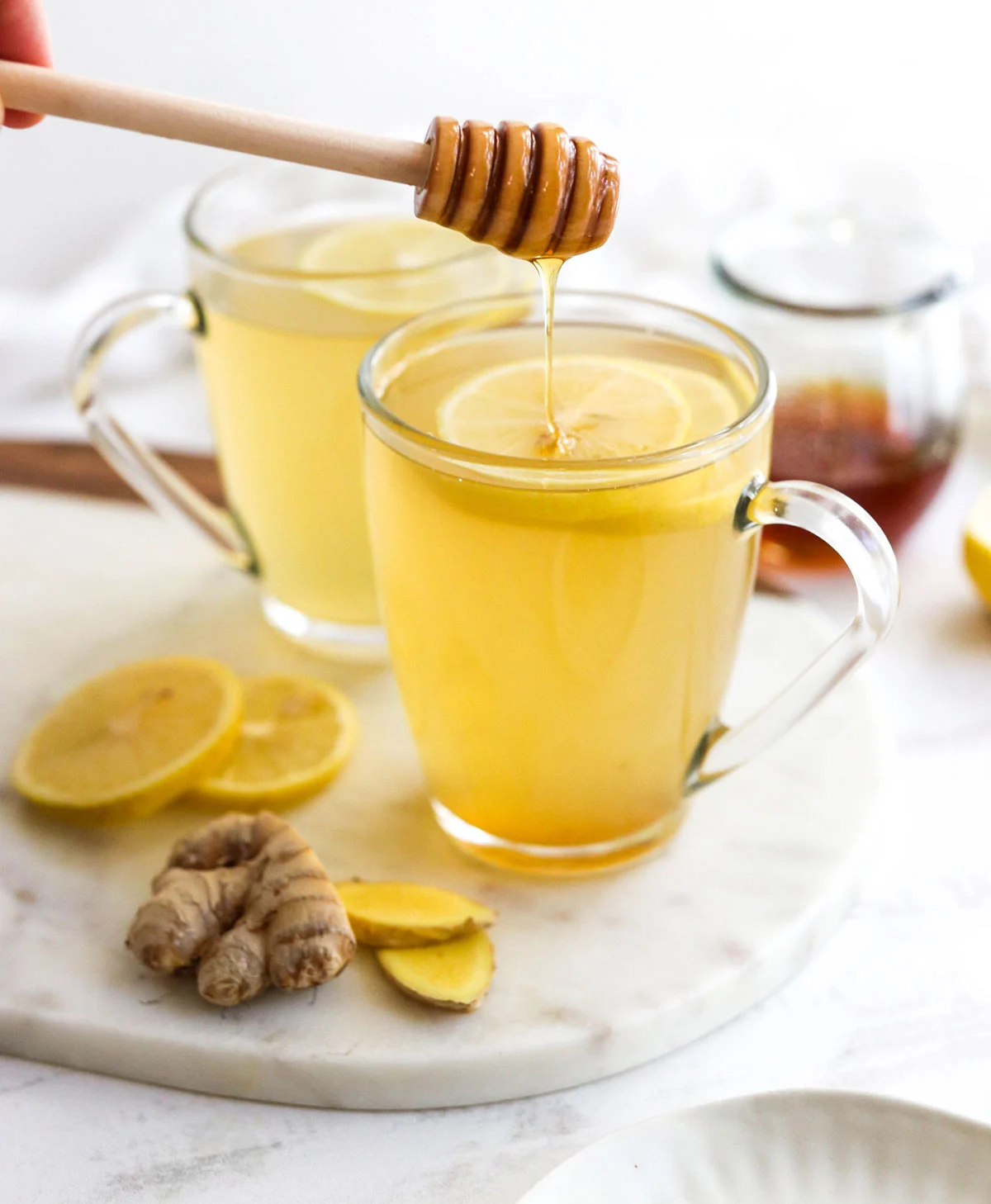The 10 Best Natural Hayfever Remedies to Relieve Allergy Symptoms

Looking for natural ways to alleviate your hayfever symptoms? Here are 10 effective natural hayfever remedies that can help you feel better without medication.
Key Takeaways
-
Minimize pollen exposure by staying indoors on high pollen days and showering immediately after outdoor activities.
-
Use natural remedies like saline nasal rinses and anti-inflammatory foods to alleviate hay fever symptoms effectively.
-
Maintain good indoor air quality with HEPA filters and practice hygiene to reduce allergens in your living space.
Minimize Pollen Exposure
Minimising your exposure to pollen is one of the most effective ways to relieve hay fever symptoms. Staying indoors on high pollen days is essential. Keep your windows closed, especially in the bedroom, to limit indoor pollen levels. This simple step can significantly reduce indoor pollen, making it easier to manage your symptoms.
To manage pollen exposure and allergy symptoms during pollen season:
-
When you go outside, change clothes and shower immediately after returning indoors to remove pollen from your skin and hair.
-
Wear a mask with a HEPA filter to reduce exposure to allergens on high pollen days. Check the pollen count regularly to stay informed.
-
Recognise and limit exposure to your allergy triggers to help manage symptoms.
Adopting these natural approaches can effectively reduce your exposure to pollen and other allergens, helping you manage hay fever symptoms and enjoy the outdoors without constant discomfort.
Create a Pollen Barrier
Creating a barrier between you and local pollen can significantly reduce allergic reactions. One effective method is to apply a layer of petroleum jelly inside your nostrils to capture pollen particles.
Olive oil is another excellent option for creating a pollen barrier. Applying it around your nose can trap pollen and reduce nasal allergen exposure.
Implementing these methods can prevent tree pollen particles from entering your nasal passages and significantly reduce hay fever symptoms, including sneezing.
Saline Nasal Rinse
Saline nasal rinses are a highly effective treatment for hay fever, helping to clear nasal passages of pollen and mucus and providing relief from congestion and other allergy symptoms, including allergic rhinitis, and nasal decongestant sprays.
A saline solution irrigation solution typically contains a small amount of salt and can be prepared using distilled, sterile, or boiled and cooled salt water. When using a nasal irrigation device, wash it with hot soapy water, rinse it, and air-dry to prevent infections.
Using saline nasal spray products 1-2 times daily can manage your nasal symptoms and improve nasal function, making a significant difference in your comfort during seasonal allergic rhinitis and allergy season.
Steam Inhalation
Steam inhalation is another excellent method for relieving nasal congestion associated with hay fever. Inhaling steam helps to clear a blocked nose and loosen mucus in the nostrils, making it easier to breathe and clearing the nasal passages.
To perform steam inhalation safely, maintain a safe distance from the hot water while covering your head with a towel to concentrate the steam around your face.
Incorporating steam inhalation into your routine can provide significant relief from nasal congestion, itchy eyes, watery eyes itchy throat, scratchy throat, and other hay fever symptoms, helping you feel more comfortable.
Hydrate with Honey and Lemon

Combining honey and lemon creates a soothing drink that helps alleviate mucus buildup in the throat, which can be beneficial for a sore throat. Honey has antibacterial properties that can reduce congestion, while lemon is rich in vitamin C, supporting the immune system.
Mix the juice of half a lemon with a teaspoon of honey in hot water for a pleasant drink that helps with hay fever symptoms. This combination not only tastes great but also provides essential nutrients to help your body fight off allergens. Home remedies like this can be beneficial for managing symptoms.
Incorporating this drink into your daily routine can help alleviate mucus congestion and provide natural relief from hay fever symptoms.
Use Quercetin Supplements
Quercetin is a natural supplement known for reducing histamine production, which helps alleviate allergy symptoms. Common dosages are up to 500 milligrams taken twice daily. Consult a health professional before taking quercetin or antihistamines to ensure it is appropriate for you.
Quercetin is found in foods like:
-
onions
-
turmeric
-
dark berries
-
red wine
-
citrus fruits
These foods have immune-boosting properties. Including them in your diet can help manage hay fever symptoms with natural remedies.
Using a quercetin supplement and incorporating quercetin-rich foods into your diet can help manage hay fever symptoms and improve overall well-being.
Wear Protective Gear Outdoors
Wearing protective gear outdoors is essential for managing hay fever symptoms. Wraparound sunglasses can shield your eyes from pollen, while a wide-brimmed hat can reduce pollen exposure to your face and eyes. For additional strategies, consider seeking hay fever advice.
Using wearing wraparound sunglasses and wide-brimmed hats can significantly alleviate outdoor hay fever symptoms and seasonal allergies. These simple items can make a big difference in reducing your exposure to pollen and other allergens, especially when symptoms worse due to high pollen counts. If you’re looking for ways to cure hay fever, these strategies can be quite effective.
Wearing protective gear allows you to enjoy the outdoors more comfortably and reduces the impact of hay fever symptoms on your daily life.
Opt for Anti-Inflammatory Foods
Incorporating anti-inflammatory foods into your diet can help manage hay fever symptoms by reducing inflammation. Ginger’s natural anti-inflammatory properties may alleviate congestion and reduce histamine levels, while turmeric contains curcumin, known for its anti-inflammatory effects, potentially functioning as a natural antihistamine.
Omega-3 fatty acids found in fatty fish like salmon can reduce airway inflammation, potentially improving breathing and decreasing allergy severity. Lemon, rich in vitamin C, aids in breaking down mucus and supports the immune system.
Integrating these anti-inflammatory foods into your diet can help manage inflammation and reduce the intensity of hay fever symptoms, improving your overall quality of life.
Keep Indoor Air Clean

Keeping indoor air clean is crucial for reducing exposure to allergens. High-quality air filters, such as HEPA filters and high efficiency particulate air filters, can significantly decrease airborne allergens by eliminating up to 99.97% of airborne particles, including pollen and pet dander.
To improve indoor air quality and reduce allergens, consider the following:
-
Use air purifiers with HEPA filters, which are effective in reducing allergens and potentially alleviating allergy symptoms.
-
Use a vacuum cleaner fitted with a HEPA filter.
-
Maintain regular dusting and thorough cleaning to reduce allergens like pet dander and dust mites.
Maintaining clean indoor air creates a healthier living environment and reduces the impact of hay fever symptoms.
Practice Good Hygiene
Practicing good hygiene helps reduce exposure to allergens through the following actions:
-
Washing hands and face eliminates pollen from the skin.
-
Cleansing the face at night prevents allergens from irritating the eyes and skin.
-
Showering before bed removes pollen from your body and hair, preventing nighttime allergy aggravation.
Changing clothes after being outdoors prevents bringing pollen into your living space. Using a facial moisturizer after cleansing creates a protective barrier against allergens.
Adopting these hygiene practices reduces your exposure to allergens and helps manage hay fever symptoms and allergies more effectively.
Summary
In summary, managing hay fever symptoms naturally involves a combination of minimizing pollen exposure, creating barriers, using natural remedies, and maintaining good hygiene. By implementing these strategies, you can significantly reduce the impact of allergies on your daily life.
Remember, it’s important to find what works best for you and consult with a health professional if needed. With these tips, you can navigate through allergy season more comfortably and enjoy a better quality of life.
Frequently Asked Questions
How can I reduce pollen exposure indoors?
To reduce pollen exposure indoors, keep your windows closed on high pollen days and use HEPA air purifiers to filter out allergens effectively. These simple steps can make a big difference in your comfort!
What are some natural remedies for hay fever symptoms?
You can find relief from hay fever symptoms with natural remedies like saline nasal rinses, steam inhalation, honey and lemon drinks, quercetin supplements, and adding anti-inflammatory foods to your meals. These options can help ease your discomfort effectively!
How does steam inhalation help with hay fever symptoms?
Steam inhalation can really help with hay fever symptoms by clearing your blocked nasal passages and loosening up mucus, giving you some much-needed relief from congestion. Give it a try and see how it works for you!
What foods should I eat to help with hay fever symptoms?
To ease hay fever symptoms, incorporate anti-inflammatory foods like ginger, turmeric, fatty fish rich in omega-3s, and foods high in vitamin C into your diet. These tasty choices can really make a difference!
Why is good hygiene important for managing hay fever?
Good hygiene is crucial for managing hay fever because it lowers your exposure to pollen and allergens by keeping your hands and face clean, showering before bed, and changing into fresh clothes after being outside. By incorporating these practices, you can significantly alleviate your symptoms.
Researched and reviewed by Dr Elena Seranova, Ph.D.
Dr Seranova holds a master's degree in Translational Neuroscience from the University of Sheffield, UK, and a Ph.D in Stem Cell Biology and Autophagy from the University of Birmingham, UK. She is a published author in multiple peer-reviewed journals, including Cell Reports and Developmental Cell.
LEARN MORE!






Leave a comment